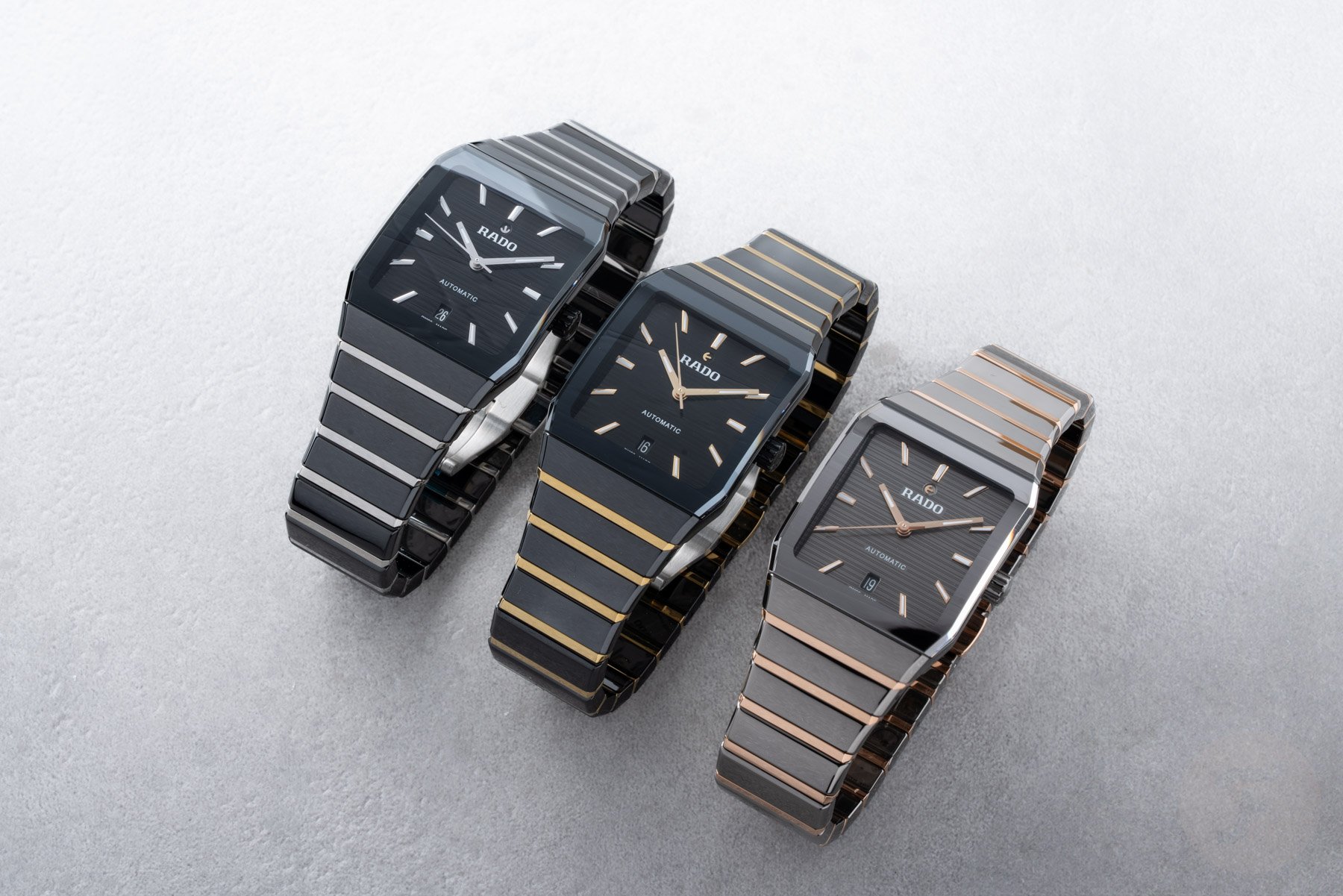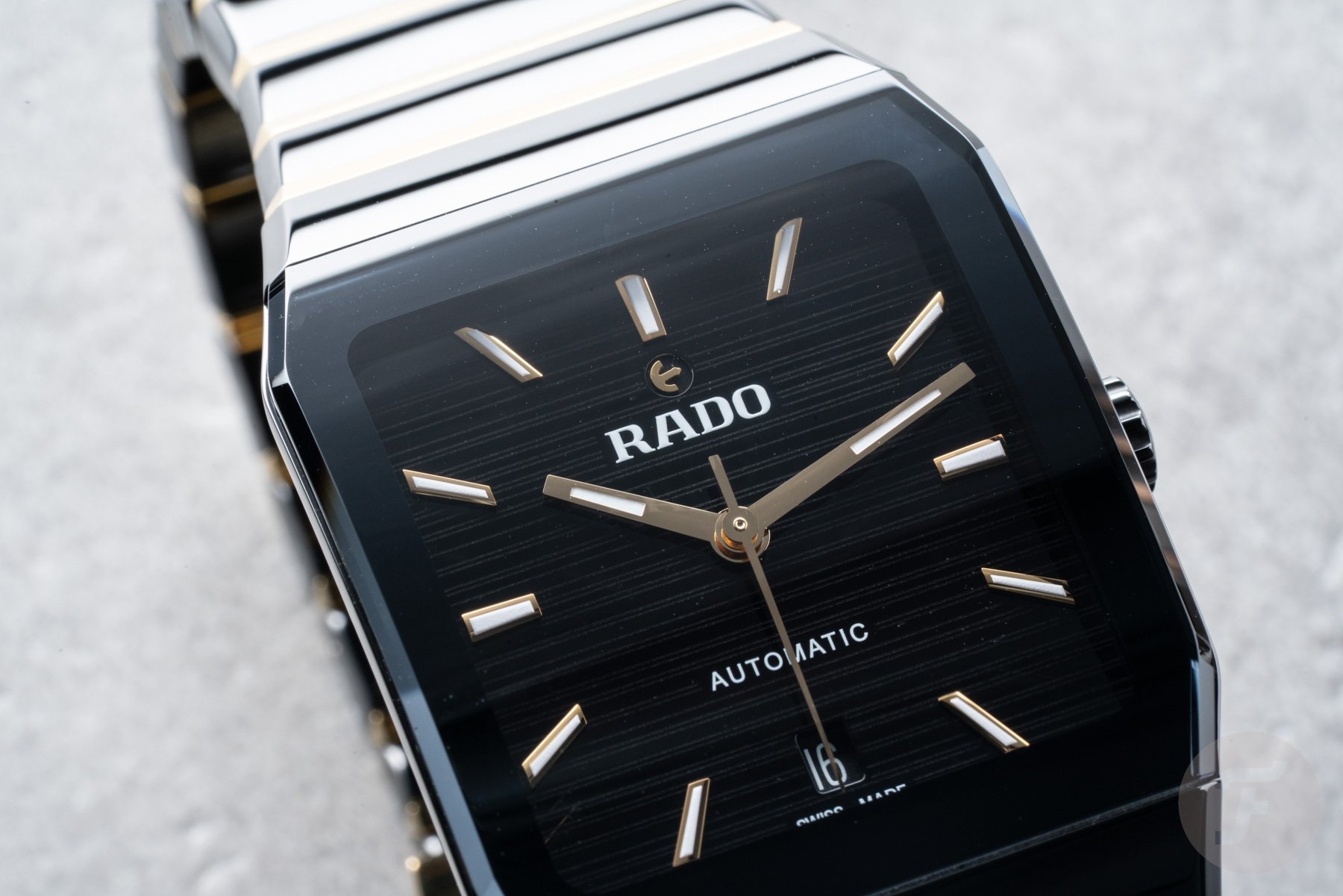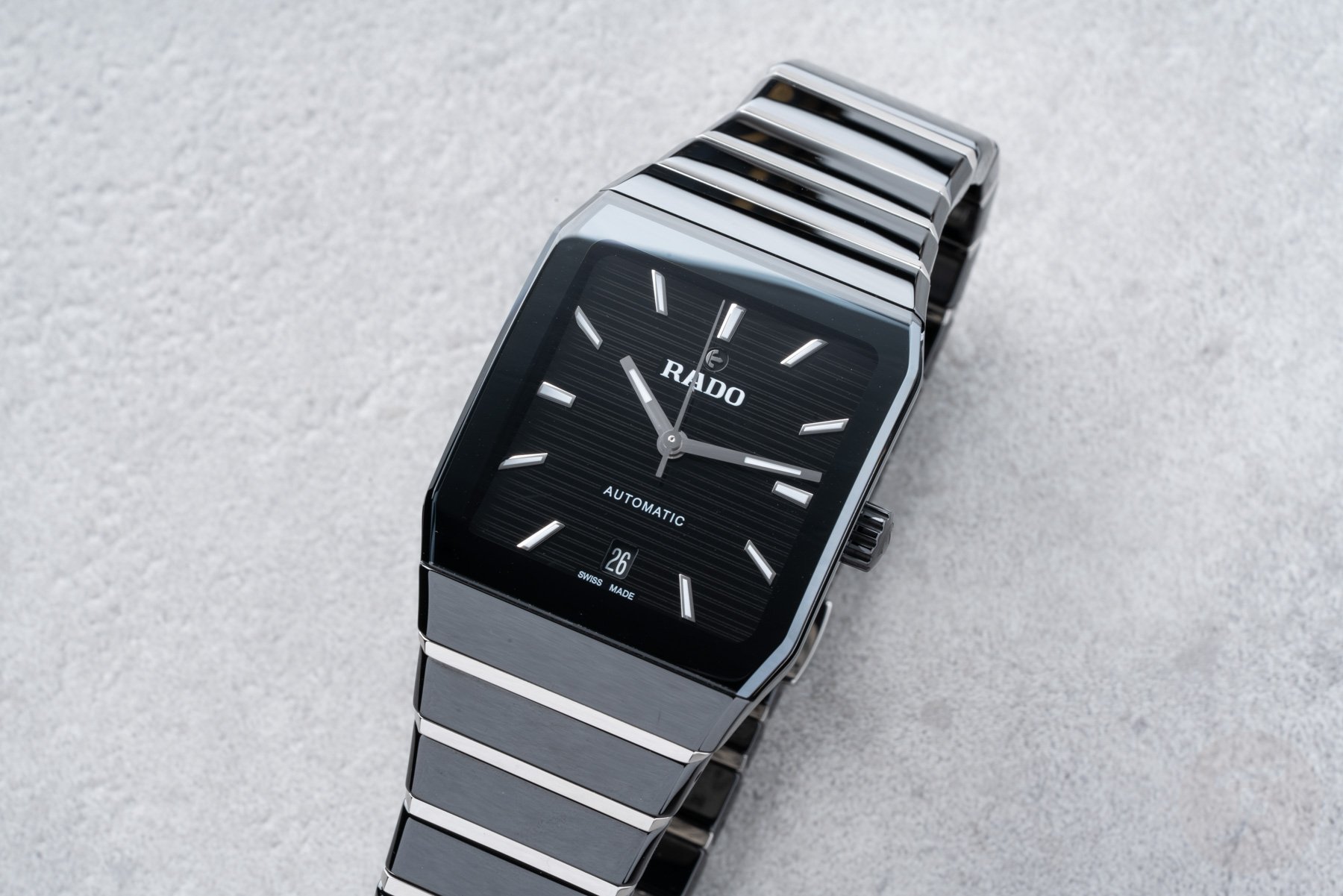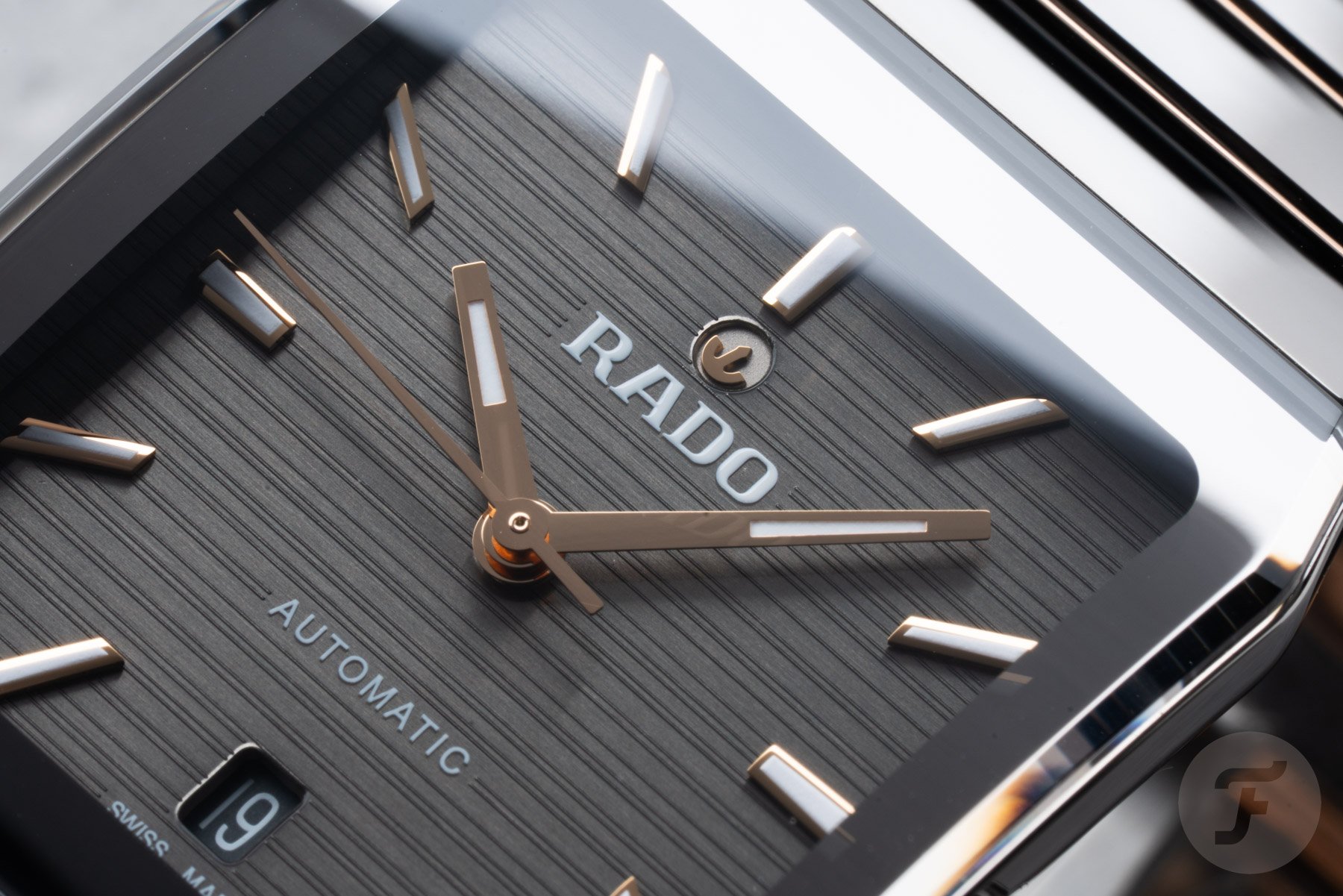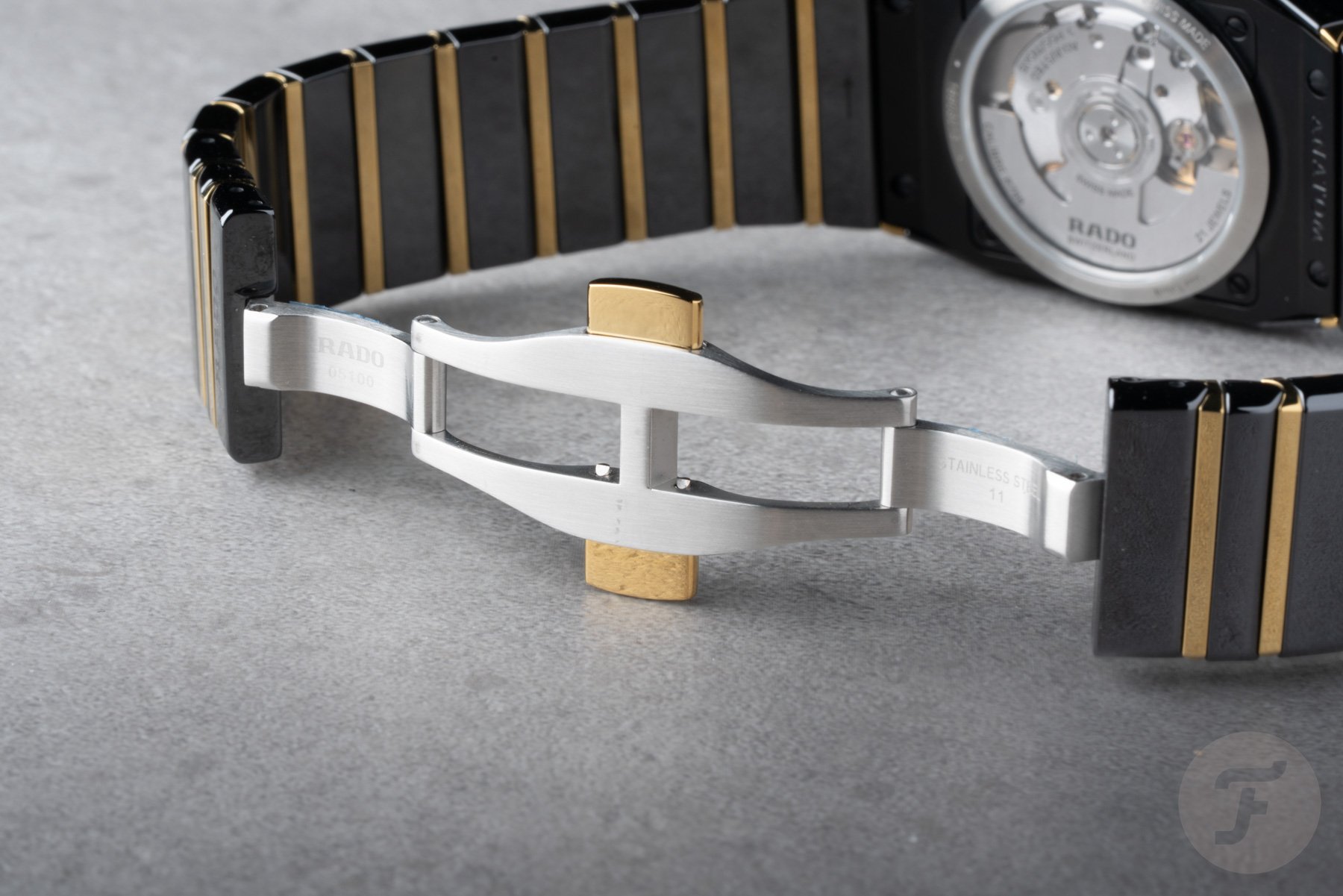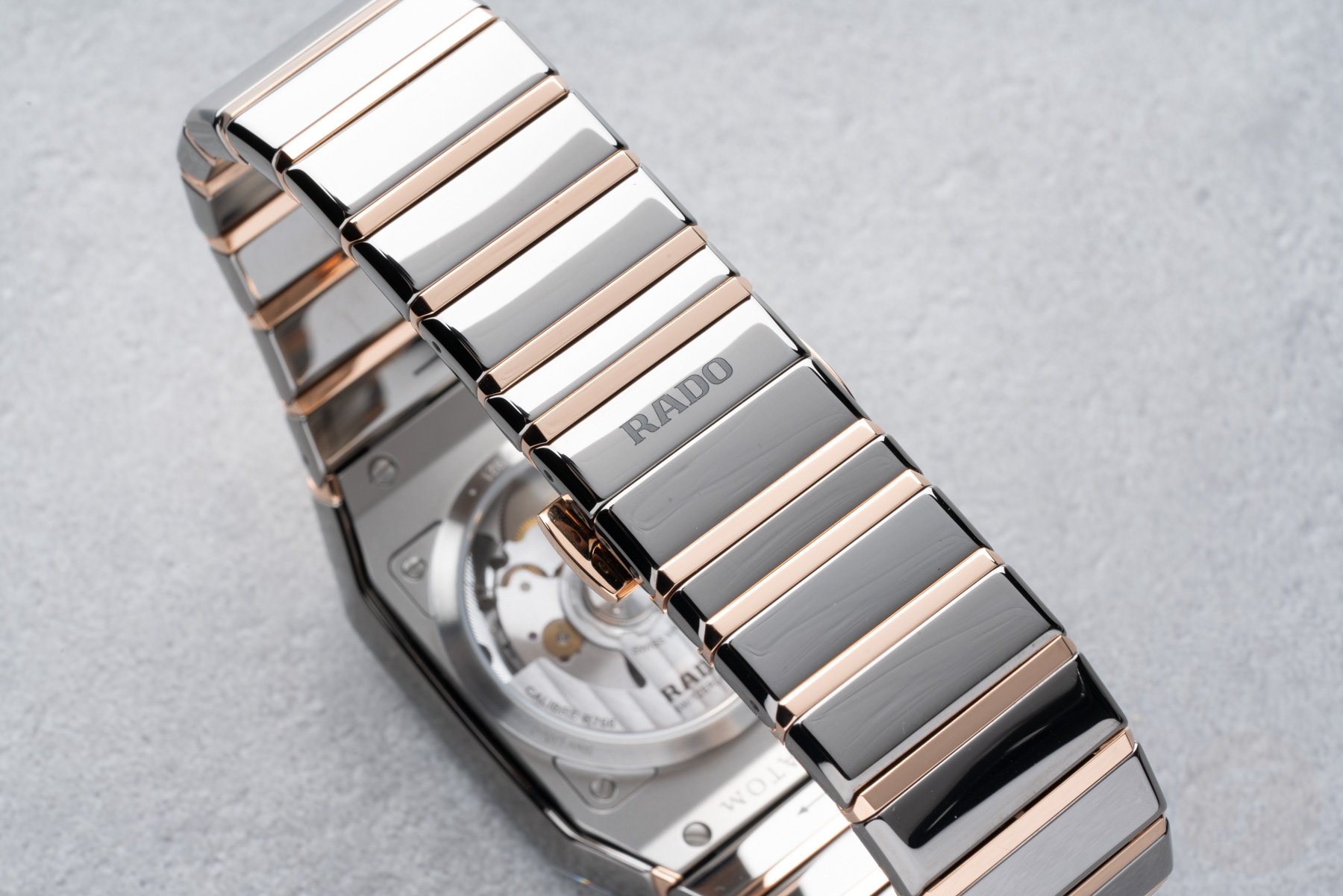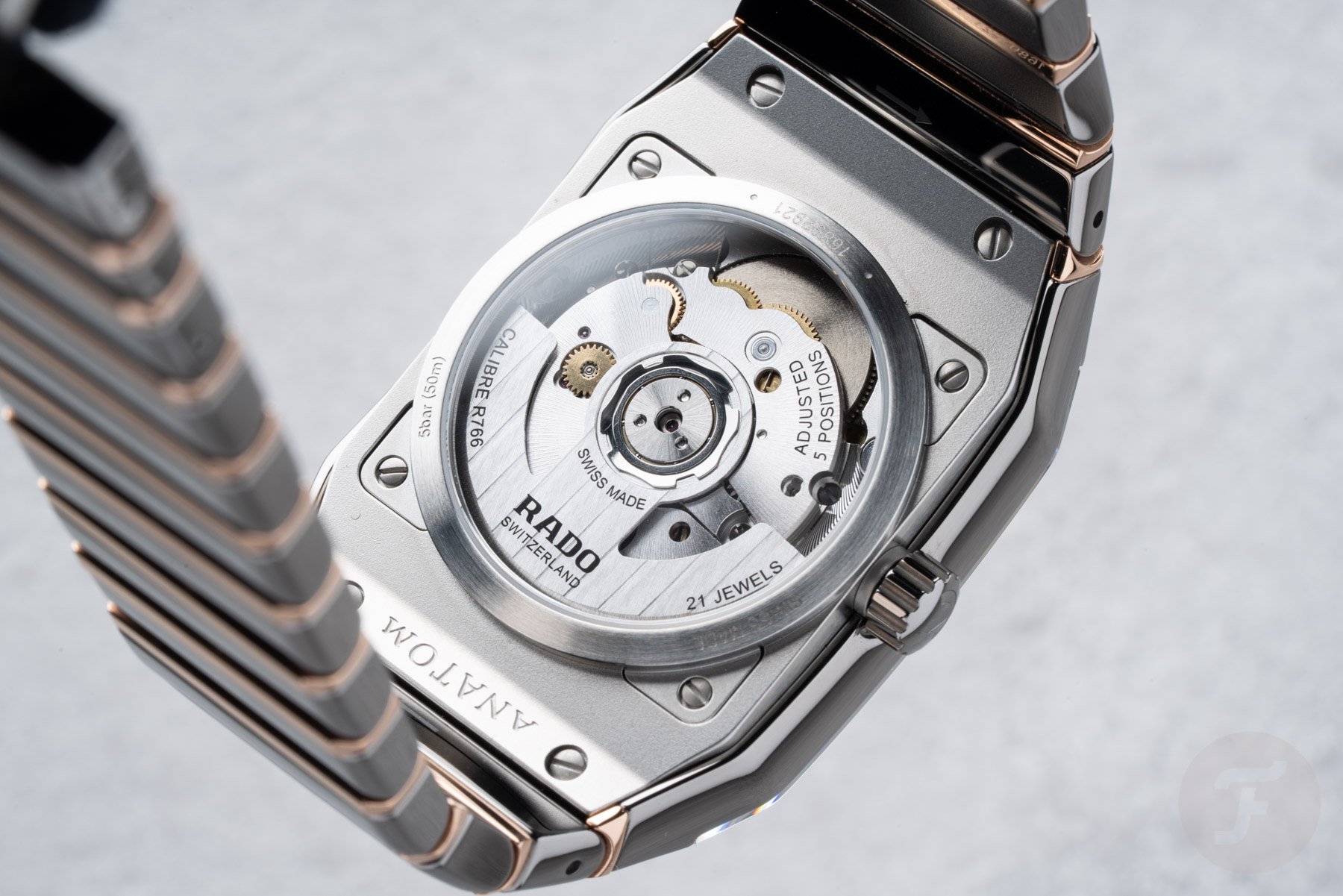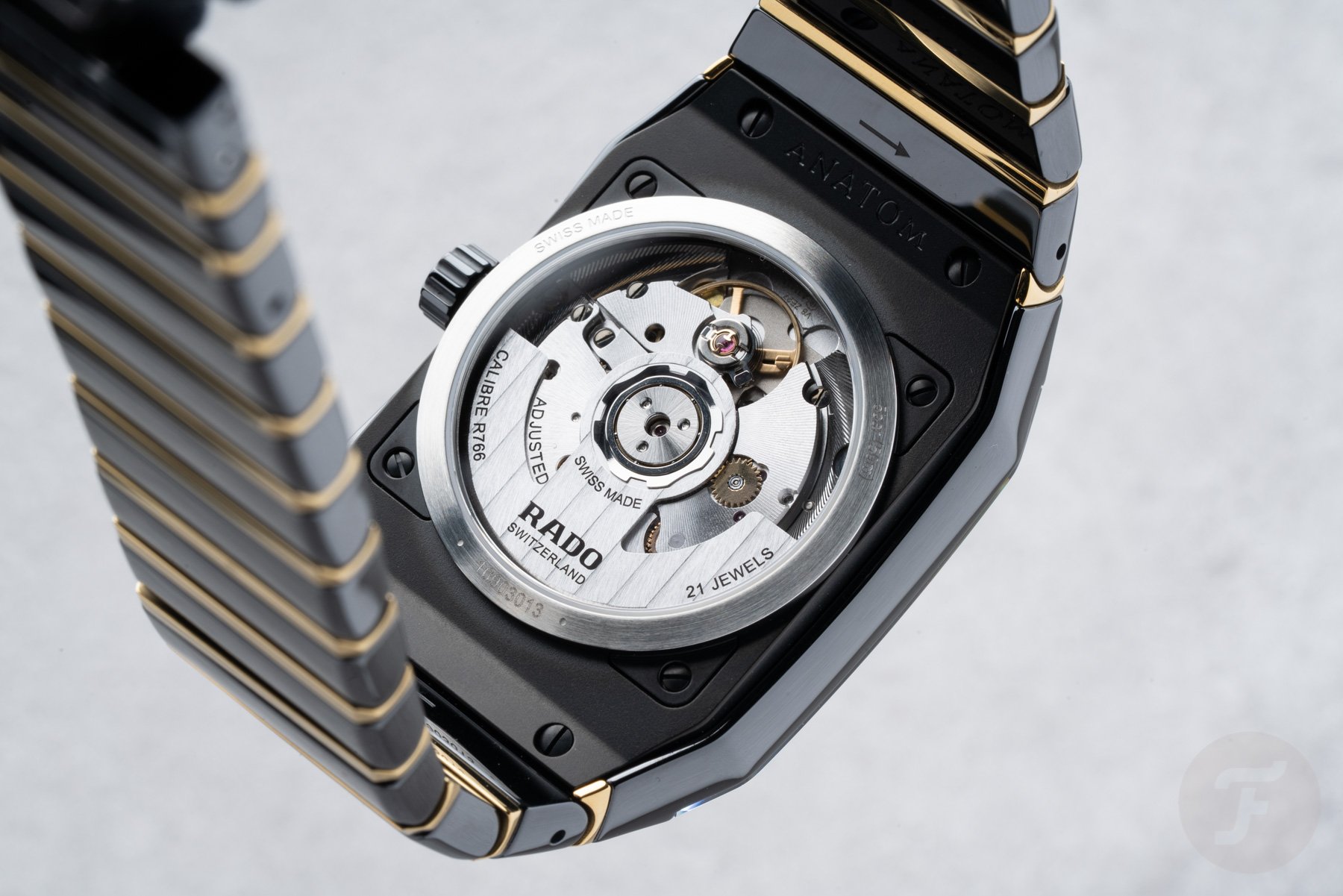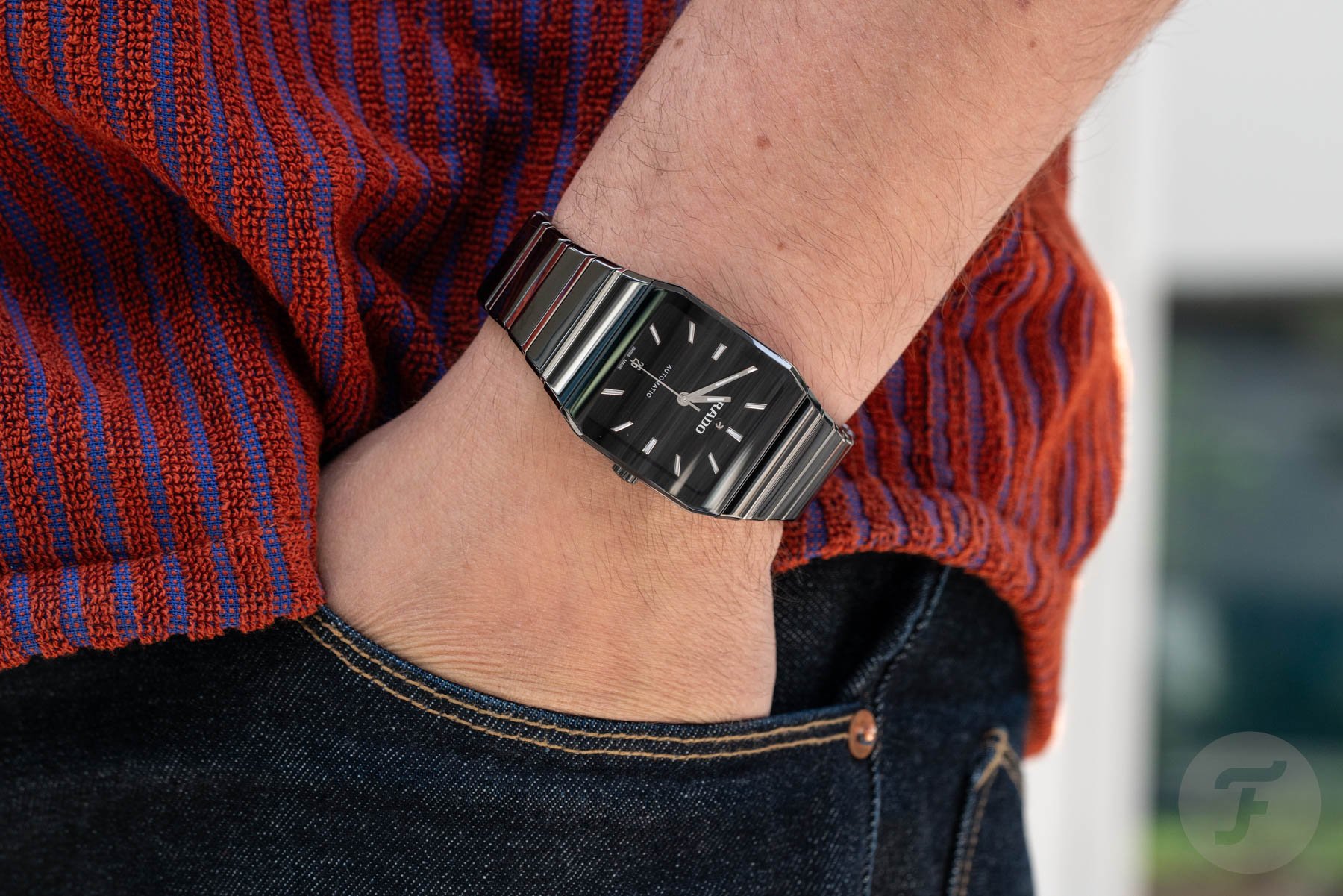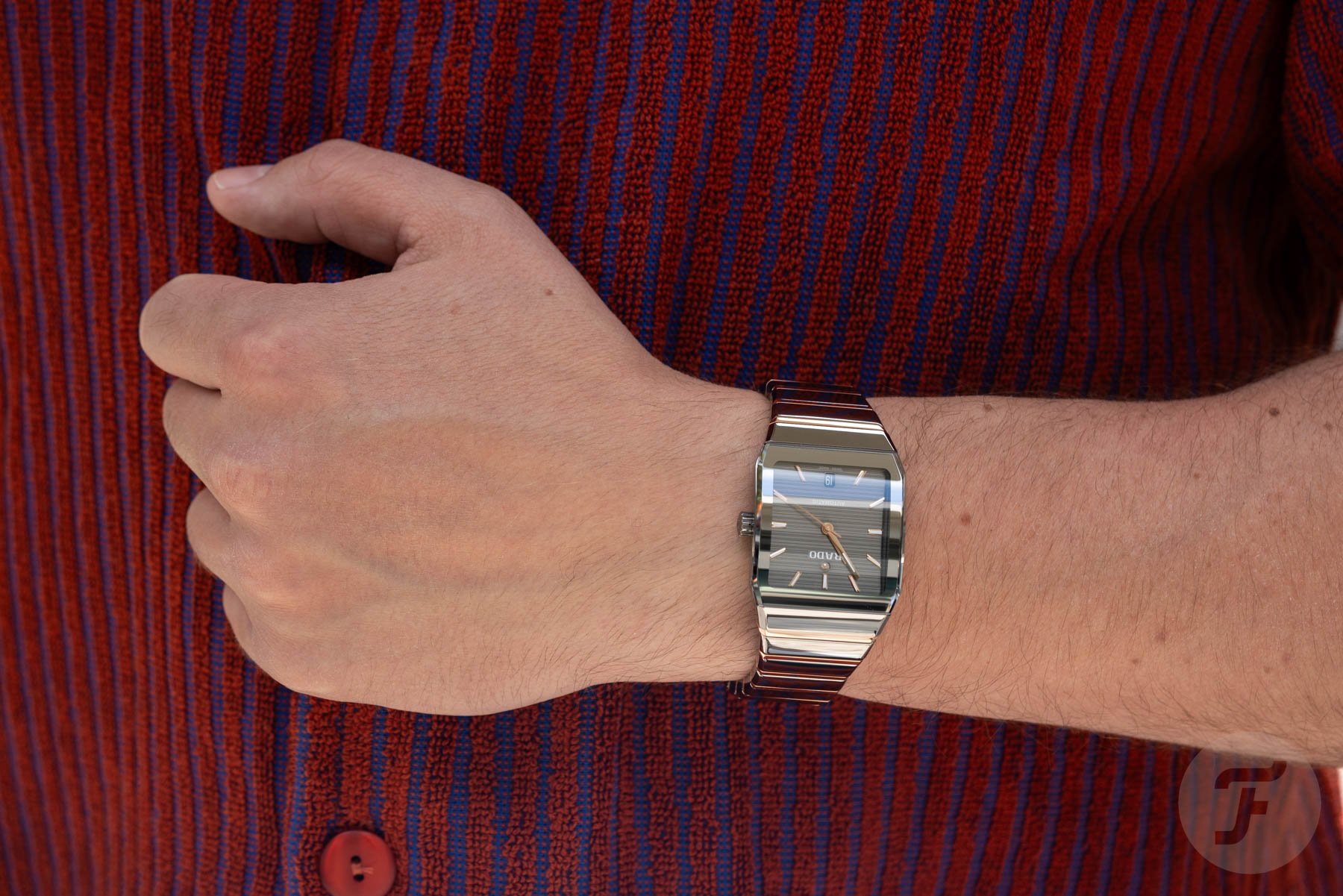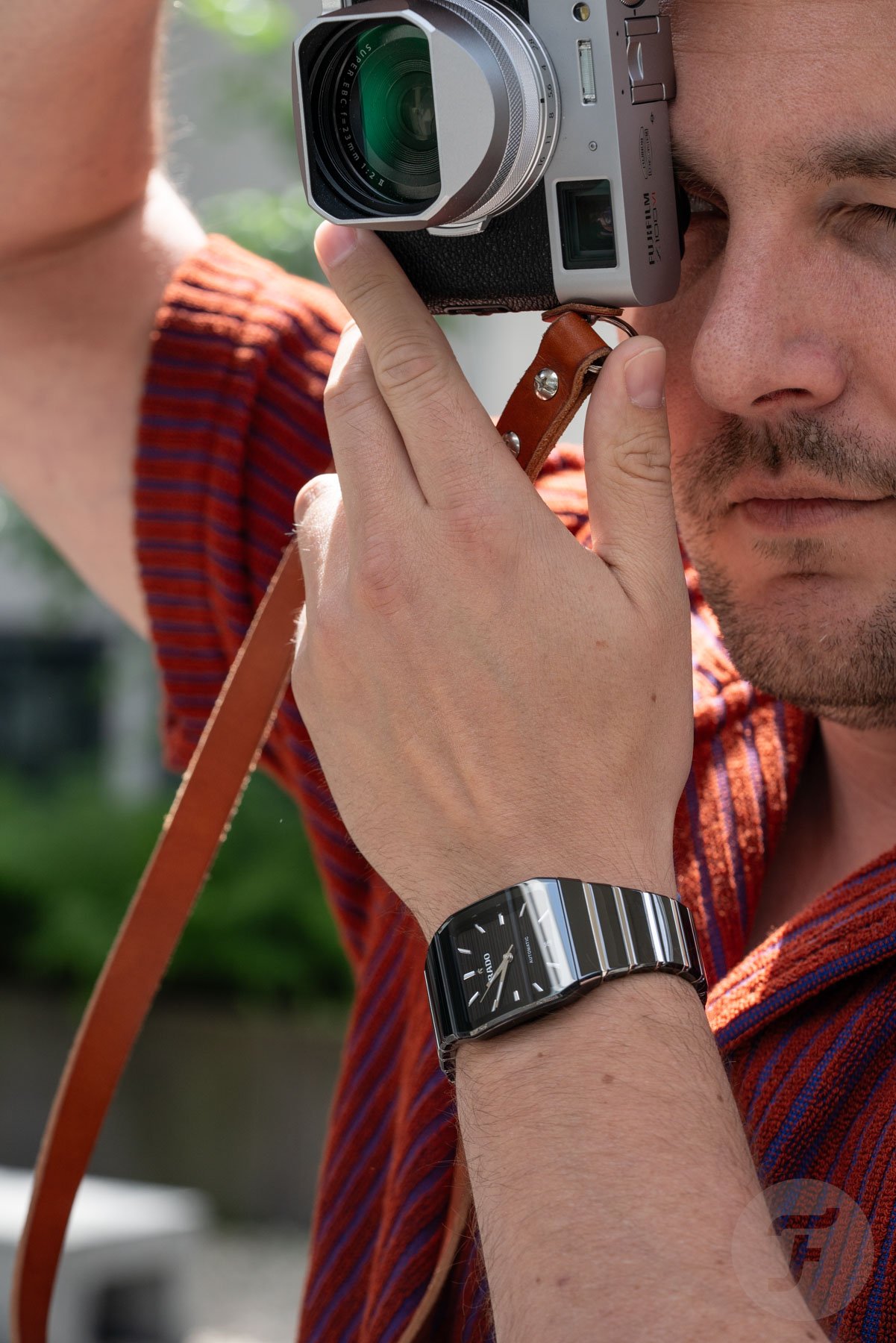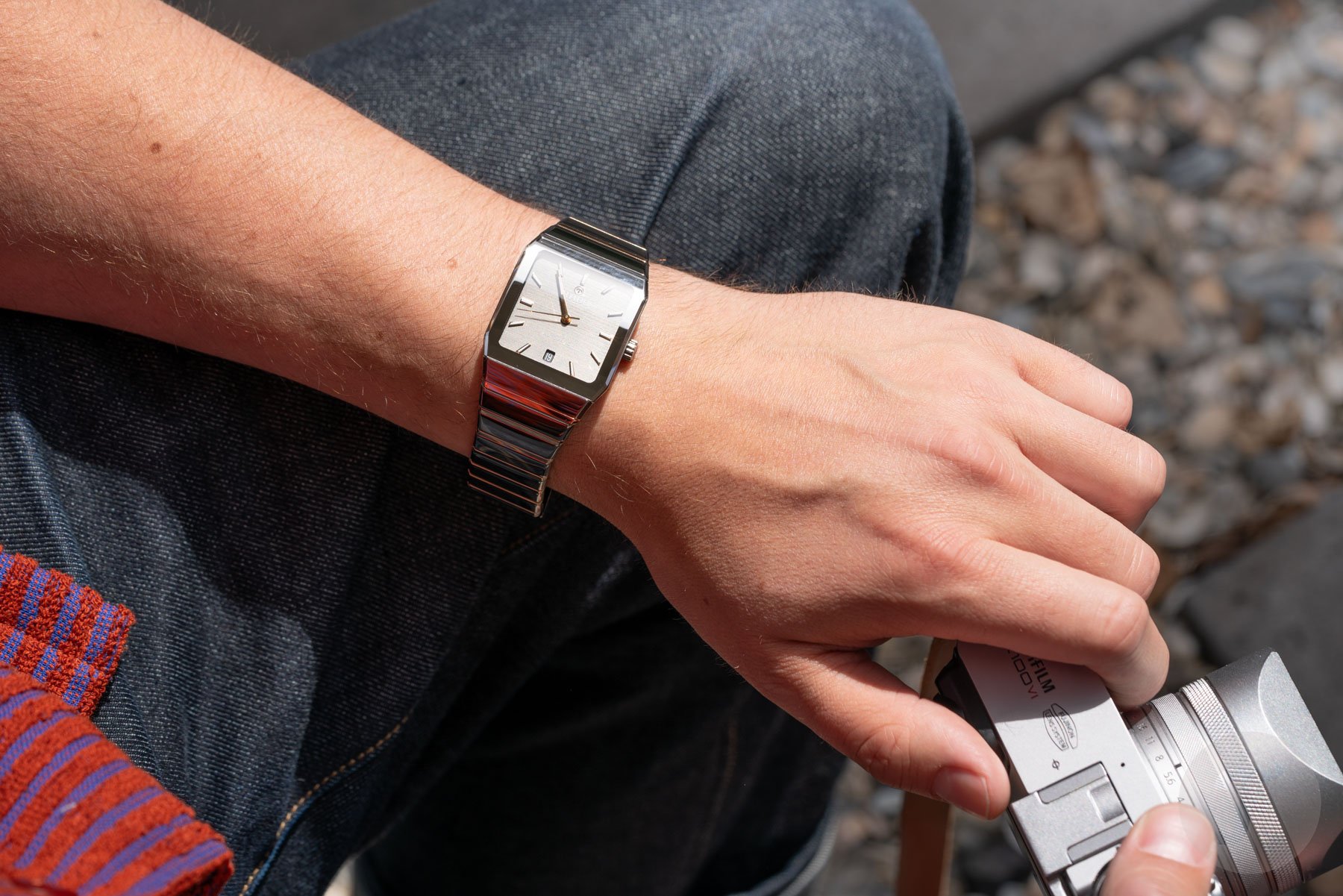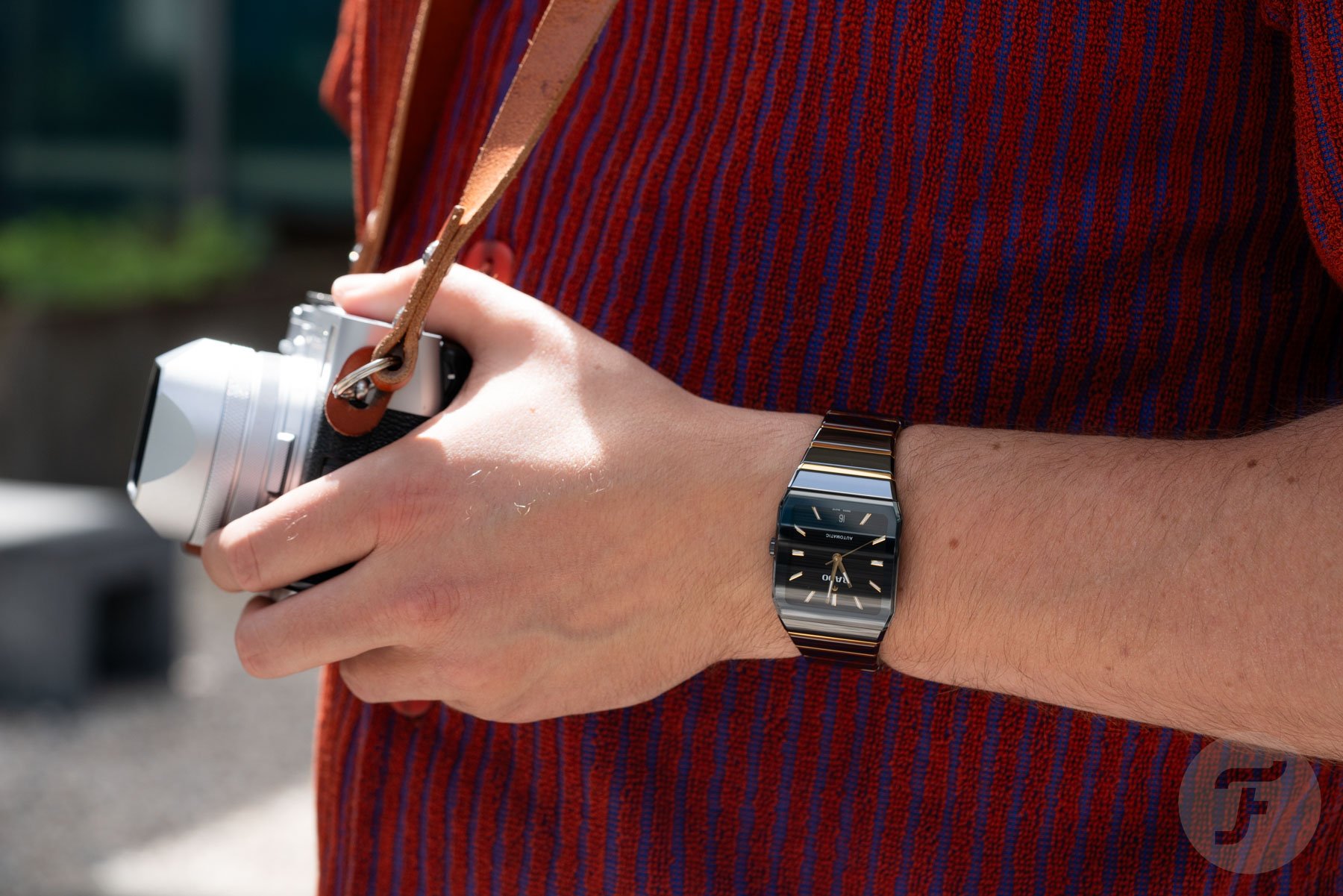Hands-On With Three Striking Rado Anatom Models With High-Tech Ceramic Bracelets
When Rado announced the comeback of the Anatom series, it brought back many memories. I vividly remember that my mother was a big fan of the black ceramic Rado watches in the 1990s. So while I was checking out the promo materials of Pete Sampras and his Movado Museum Watch back then, my mother was eyeing a Rado Ceramica in the shop windows of several German retailers. In the end, she settled for multiple less flashy watches from other brands, but I’m sure she would have enjoyed one greatly. Plus, the fact that she, as a non-watch person, loved the Ceramica so much has always stayed with me. So it’s no surprise that I was more than happy to try out the latest additions to the Rado Anatom lineup. These three models are slightly bigger and feature high-tech ceramic bracelets. As you can imagine, I was excited to find out more.
We have covered the previous Rado Anatom releases here at Fratello. Mike reported on the return of the Anatom series, and Lex had the pleasure of reviewing one of the three inaugural models of the renewed Anatom collection. But the one thing that was missing was a full ceramic bracelet. Fear not because, starting now, Rado offers the Anatom with high-tech ceramic bracelets. But there is more to these three new releases than just the bracelets. Essentially, they are completely new Anatom models with larger and slightly different cases, new dials, and the aforementioned bracelets. The result is a trio of Rado Anatom models that immediately became my favorite Rado models.
The new Rado Anatom models
Let’s start with some details about these watches to give you an idea of why I like them so much. All three feature a newly sculpted ceramic case that measures 32.5mm wide, 46.3mm long, and 11.3mm thick. There are beveled edges on the curved sapphire crystal, bezel, and bracelet links. Additionally, the case elegantly tapers toward the integrated bracelet, which tapers further from 25mm at the case to 20mm at the clasp. This natural flow from the case to the bracelet is characterized by the angular portion that starts the taper. But thanks to the rounded bevels, the shapes are always elegant and soft.
We received three versions of the Anatom for review. The first is a polished black ceramic model with a ceramic bracelet featuring black and stainless steel connecting links. The second model is similar to the first, but it swaps the silver-tone parts of the bracelet for gold PVD ones. Lastly, there is a polished plasma ceramic model with a matching bracelet containing rose gold PVD connecting links. Rado’s plasma ceramic has a color similar to polished titanium. The hue is slightly darker than stainless steel, but it also feels different from titanium, as we usually see brushed or blasted titanium watches. It’s an uncommon look and feel that I adore.
Three dial variations
All three watches contain similar dials with a distinct ’80s feel. The two black ceramic models feature a black lacquered dial with an irregular striped pattern, while the plasma ceramic model houses a gray dial in line with the color of the case and bracelet. It also displays the same irregular striped pattern as the two black dials. All three dials have a classic configuration with simple hour markers and hands. As you would expect, the colors depend on your preferred version. The black and gold model features polished gold-tone markers and hands treated with white lume, a gold-tone Rado anchor logo, and a date window at 6 o’clock.
The black and silver model has rhodium-colored applied indexes and hands. Just like those in the black and gold version, they are treated with white lume that provides contrast during the day and night. As on the black and gold model, the date display is black with white printing and has the text “Swiss Made” printed underneath it in white.
Lastly, the plasma ceramic version features a lacquered gray dial with contrasting rose gold hands and markers. Like the two other models, Rado used white lume for contrast. Overall, though, the feel of this dial is a lot softer and friendlier for the eye. I was pleasantly surprised by how much I love this look. Because of my long history with the Rado ceramic watches, I usually feel they “should be” black ceramic. But this plasma ceramic version proves me wrong.
The bracelet makes the Rado Anatom complete
The big news of these three releases is the introduction of a new bracelet. As mentioned, the two-tone bracelet consists of links made up of black or plasma-colored ceramic with stainless steel connecting links in the color matching the dial accents. It also features a hidden butterfly clasp in stainless steel with push buttons executed in the accent color of each model.
The bracelet feels sturdy and well made, and the individual links have room to move up and down, so they can shape to the wrist. When we received the watches, the bracelet was sized too large for my wrist. However, when I tried sizing the bracelet, I discovered I could only remove one link on each side of the clasp. It was rather puzzling because I would also have to remove the next links to make it fit my not-so-small 18.5cm wrist.
The intricate construction of the bracelet
But it made sense after checking the website and trying to size the bracelet. When I removed the first link and the connecting part, I found out that the bracelet construction is rather intricate and requires removing additional parts placed inside the hollow link to be able to size it. While not complicated, it is a bit of a task that requires your full attention and focus. But that is why Rado asks your wrist size and will size the bracelet for you when you buy an Anatom. If the watch doesn’t fit properly upon delivery, you can have a retailer remove links, or if you are handy, you can do it yourself. Despite the construction not being as practical as a regular stainless steel bracelet, I found it impressive nonetheless.
The movement inside
All three of these Anatom watches house Rado’s caliber R766. Essentially, this movement is an ETA A31.111 with an anchor-shaped, Rado-branded rotor. The A31.111, in turn, is based on the famous ETA 2892-A2. The automatic caliber operates at 25,200vph, has 21 jewels, and offers 72 hours of power reserve.
The caliber comes with a Nivachoc shock absorber and a Nivachron balance spring. The finishing of the movement is industrial but very decent. In all fairness, though, I wouldn’t mind seeing a non-display case back because I feel it would suit the concept of these watches better.
Wearing the Rado Anatom models
Despite black generally being a “stealthy” color, these watches jump off the wrist. Both in size and in color, they will let you know you are wearing a Rado Anatom. When I say “color,” though, I actually mean the finish because the polished black surfaces make the watch stand out immediately. As you would expect, that also comes with disadvantages because polished ceramic is a fingerprint magnet. You will see them in detail once you or anyone else has touched the watch.
Apart from that, the watches fit my wrist very nicely and look good. However, I can see that they are not necessarily a great fit for people with smaller wrist sizes. The case and the 20mm bracelet are not necessarily too big, but the latter is slightly thicker than a stainless steel bracelet because of its construction with hollow ceramic links. It adds volume and presence to the watches, which doesn’t work as well on smaller wrists. Nevertheless, the watches felt right at home on my 18.5cm (7.3″) wrist.
The Rado Anatom wears like a bracelet
While I initially gravitated towards the two black models because of my historical association, I quickly pivoted towards the plasma ceramic version. The hue of the material is intriguing, and it works well with the rose-tone details. It holds the middle between stainless steel and titanium with a full-polished finish. The look and feel made me fall in love with that model quickly.
What all three watches have in common is that they wear like a bracelet due to the materials and construction. On top of that, once you have a Rado Anatom on your wrist, there is mostly visual interaction. You are good to go once you have set the time and date. That is very easy, thanks to the push-pull crown. While it is rather small and you have to find out how to grip it best and turn it, once you’ve done that, it feels solid. There is no play between turning the crown and seeing the hands move, which is nice, and the construction and materials make the Anatom feel like a proper luxury watch.
Final thoughts on the latest Rado Anatom models
Overall, I was super impressed by these new versions of the Rado Anatom. I could even envision myself wearing the plasma ceramic version more often. That is the one that impressed me the most. The watch looks awesome, and at 137 grams, it is a joy to wear. While that is not featherlight by any stretch of the imagination, I like that it has some substance. It adds to the satisfaction of wearing a truly special watch.
Indeed, that is what all three of these watches are. The Anatom was unlike anything else when it debuted in the early 1980s, and it is still distinct today. So, kudos to Rado for bringing back the full-ceramic Anatom. Wearing these watches certainly brought a smile to my face multiple times. If it wasn’t due to the impressive looks, it was because of the great memories of our family holidays, giving these watches a special place in my heart.
A great personal storyteller
The three new Rado Anatom models are available now. The black and steel model version costs €4,850, while the others cost €5,100. While those are substantial price tags, once put into perspective, they make more sense. The three new models are ceramic watches with a unique design created with clever engineering. As said, I was seriously impressed by these watches during my time with them. This, for me, is Rado at its best and why I love these watches so much. The bonus of the personal connection makes them priceless for me. So yes, the new plasma ceramic Rado Anatom has found a spot high on my wishlist. It is that good. For more information, visit the official Rado website.
This is a partnership post. Read about our transparency here.

